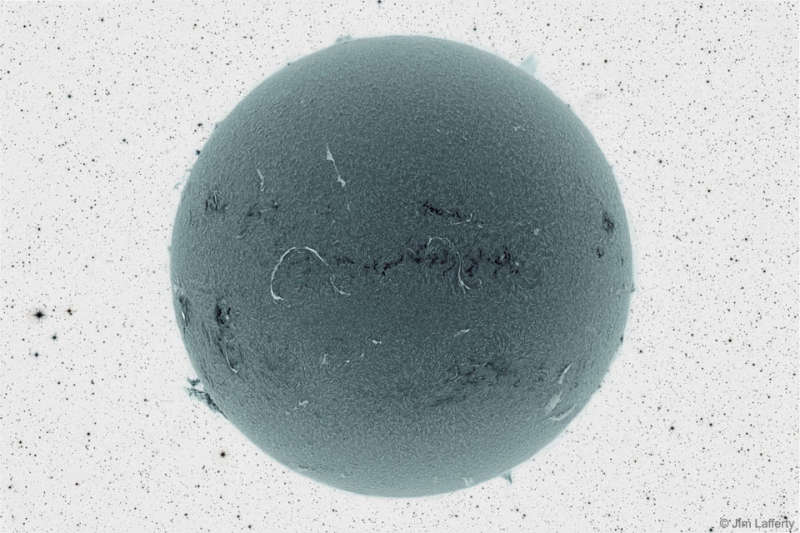Credit & Copyright: Jim Lafferty
Explanation:
Does this strange dark ball look somehow familiar?
If so, that might be because it is our Sun.
In the featured image from 2012, a
detailed solar view was captured originally in a
very specific color
of red light, then rendered in black and white, and then color inverted.
Once complete, the resulting image was added to a
starfield,
then also color inverted.
Visible in the image of the Sun are
long light filaments, dark active regions,
prominences peeking around the edge, and a
moving carpet
of hot gas.
The surface of our
Sun can be a busy place, in particular during
Solar Maximum, the time when its surface
magnetic
field
is wound up the most.
Besides an active Sun being so picturesque, the
plasma
expelled can also become
picturesque when it impacts the
Earth's magnetosphere and creates
auroras.
Compute it Yourself:
Browse 2,900+ codes in the Astrophysics Source Code Library
1999 2000 2001 2002 2003 2004 2005 2006 2007 2008 2009 2010 2011 2012 2013 2014 2015 2016 2017 2018 2019 2020 2021 2022 2023 2024 2025 |
Yanvar' Fevral' Mart Aprel' Mai Iyun' Iyul' Avgust Sentyabr' Oktyabr' Noyabr' Dekabr' |
NASA Web Site Statements, Warnings, and Disclaimers
NASA Official: Jay Norris. Specific rights apply.
A service of: LHEA at NASA / GSFC
& Michigan Tech. U.
|
Publikacii s klyuchevymi slovami:
Sun - Solnce
Publikacii so slovami: Sun - Solnce | |
Sm. takzhe:
Vse publikacii na tu zhe temu >> | |
